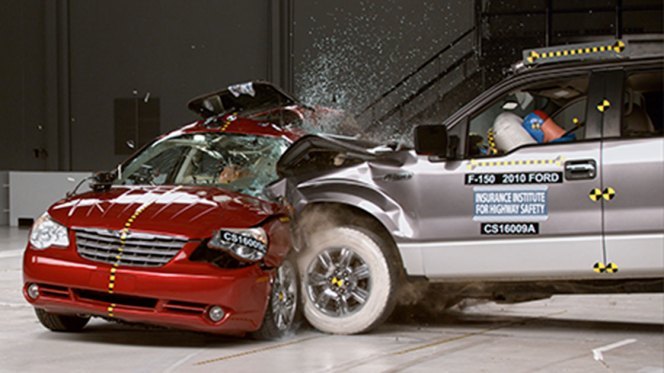Based on previous Northwestern University research, we already knew that Chicago's red light cameras have been doing their job to prevent serious and fatal crashes. Today the Chicago Department of Transportation provided Streetsblog with more recent data that reaffirms that the cams are saving lives.
However, in February 2020 state legislators led by then-Republican state rep David McSweeney of Barrington Hills overwhelming passed legislation in the Illinois House that would ban red light cameras in many suburban municipalities, although Chicago would not be affected. But last month fellow GOP state rep Deanne Mazzochi of Elmhurst introduced a new bill that would ban the cams everywhere in Illinois, including our city.
The Northwestern University Transportation Center study of Chicago’s red light camera program released in March 2017 found that the cameras have had significant safety benefits, resulting in a ten-percent drop in injury crashes, including a 19-percent drop T-bone and/or turning crashes, which are more likely to result in serious injuries than other types of collisions. The report also noted a “spillover effect” that is leading to less red light running at intersections that don’t have the cams.
This morning CDOT directed Streetsblog to the most recent crash stats from Chicago red light camera intersections, available on the city's website. This comparison shows that between 2005 and 2018 collisions of all types were down at intersections with the cams, and overall safety had improved.
(According to CDOT, the findings are based on comparisons from the Illinois Department of Transportation of crashes that happened within 250 feet of current red light camera-enforced intersections in 2005 and 2018. In 2009, IDOT changed its reporting methodology for certain crash types to include only crashes resulting in $1,500 or more in property damage [increased from $500]; this may have an effect on the comparison of total, right-angle ["T-bone"] and rear-end crashes reported, but does not affect the comparison of crashes involving pedestrians or resulting in injury.)
Here are the findings. Between 2005 and 2018:
- Dangerous T-bone crashes decreased by 64 percent
- All crashes at those intersections were down 59 percent
- Crashes resulting in injuries were down 40 percent
- Pedestrian crashes were down 33 percent
- Rear-end crashes were down by 62 percent
It's pretty hard to argue with that data showing that Chicago's red light cams are working. But if history repeats itself, the anti-cam Chicago Tribune will try its best to do so.
However, many drivers dislike red light cameras because they force them to modify their behavior by not entering an intersection after the light has turned from yellow to red, and coming to a complete stop before making a right turn. (The importance of the latter was underscored earlier this month when a right-turning driver fatally struck a woman on a bike in the West Lawn neighborhood on Chicago's Southwest Side.)
And, in fairness, there have also been some issues with corruption in Chicagoland red light cam programs. In January 2020 ex-Illinois state senator Martin Sandoval pleaded guilty to corruption, admitting in court that he took bribes from an owner of the red light contractor SafeSpeed in exchange for promoting RLC programs in the Chicago suburbs.
In response, that February McSweeney, who had introduced ban bills every year since the traffic camera programs were established, got legislation passed 84-4 in the House, with bipartisan support, prohibiting the cameras statewide, except in home rule communities like Chicago. McSweeney said that his legislation was “a good first step” towards banning the cams everywhere in Illinois.
The Active Transportation Alliance argued at the time that Illinois red light camera programs should be reformed, not eliminated. “The mismanagement and corruption surrounding some camera programs is a breach of public trust and those involved should be held accountable," the group said in a statement at the time. "More ethics rules should be in place to limit profiteering and revenue grabs. But the solution is not to outright ban technology that prevents crashes and saves lives.” See an ATA-endorsed list of best practices for effective red light camera placement, including eliminating incentives for mismanagement, at the bottom of this post.
In February of this year, Mazzochi, who has supported Oak Brook’s to get rid of red-light cameras at 22nd Street and Route 83, introduced a bill that would ratchet up McSweeny's previous effort with a total state RLC ban, according to a report by the Tribune's Chuck Fieldman. The legislation would also put new restrictions on speed camera implementation, and home rule communities like Chicago would not be exempt.
Oak Brook Village President Gopal Lalmalani sent a letter to IDOT in January 2020, three days after Sandoval pleaded guilty, arguing that the process for installing the local red light cameras was corrupt, the Tribune reported. IDOT responded that it would review crash data before determining which RLCs would come down.
“We have repeatedly called on Gov. Pritzker’s Illinois Department of Transportation to revoke the permit that blessed their installation under dubious circumstances,” Mazzochi said in a statement. “When red light cameras are not about motorist safety, but cynical revenue grabs; when red light cameras are implicated in pay-to-play practices, and those with the power of oversight like IDOT cannot be counted on to keep the players honest; and when our residents insist over and over again that they want them gone, but local elected officials either won’t listen or can’t help; then the only solution is either red light camera reform, or to end them altogether.”
But it's clear that politicians like McSweeny and Mazzochi, who have responded to a corruption case by trying to completely ban red light cameras, are throwing out the baby with the bathwater. Moreover, data from other cities shows that if they succeed, they will have blood on their hands.

A 2017 study by the Insurance Institute for Highway Safety looked at 19 cities that removed red light cams during the previous decade. Compared to peer cities that kept their cams, the rate of deadly crashes at intersections with stoplights was 16 percent higher in the cities that removed them. After Houston banned RLCs in 2010, fatal intersection crashes increased by 30 percent, and collisions rose 116 percent overall, according to data from Houston police.
Rather than banning red light cameras, which would result in the traffic deaths of countless more Illinoisans, leaders should consider the following recommendations issued by AAA, Advocates for Highway and Auto Safety, the Insurance Institute for Highway Safety and the National Safety Council, and endorsed by the Active Transportation Alliance:
- Put the cameras at the most dangerous intersections
- Target the most dangerous violations, i.e. blowing straight through lights
- Use standard signal timing
- Allocate the revenue to street safety programs
- Encourage public input to help design the program and oversee changes
- Be transparent — collect and publish data about how the program is functioning
- Don’t create bad incentives for the vendor by paying them by the number of tickets issued
- Don’t set up hair-trigger cameras that target minor violations
- Allow for due process by having an easily accessible process for contesting tickets
- Sliding-scale fines and alternatives to payment, such as traffic school, for low-income drivers






